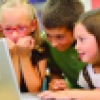.
Aims & Objectives
The aim of the European Science Education Academy is to set the pathway toward a standard-based approach to teaching science by inquiry, to create innovative professional development and training programs and to disseminate advanced methods and exemplary cases to further explore and exploit the unique benefits of the proposed approach in science teaching. At the core of the ESEA overall goal and strategy is its teacher’s professional development programme. The programme is focusing on science teachers, instructional leaders and curriculum developers. Facilitating the Inpsiring Science Education resources (a series of guidelines, scenarios of practice, tools, online labs and show cases from the numerous European schools) the programme aims to support participants to introduce innovative aspects in their school settings.
ESEA training activities are specifically designed for teaching professionals in STEM disciplines (Science, Technology, Engineering, and Mathematics). The common objectives of ESEA training activities are to introduce teachers to implementing inquire based science education, as well as resource based and project-based teaching approaches. Furthermore, teachers and education professionals will be trained in linking those approaches with the numerous collections of open digital educational resources, in order to design educational scenarios by repurposing existing ICT and online based tools.
More specifically, the objectives are:
- to acquaint participants with the significance and opportunities of inquiry-based science teaching through the use of open and online resources in STEM education;
- to support the continuous professional development of teaching professionals to increase their skills and competences to become innovators and creators of content rather than being users of existing material;
- to enable teachers to successfully find, develop and apply the innovative tools and multidisciplinary teaching techniques that will help them create attractive science lessons and thus foster the interest of their students in science topics;
- to introduce and apply innovative teaching methodologies and use of ICT tools in STEM teaching settings;
- to lead teachers to involve students in finding their own problems, testing ideas, receiving feedback, and working collaboratively with other students or practitioners beyond the school classroom;
- to give teachers the opportunity to interact and work with scientists to develop new learning opportunities for their students.
.
.
About
The European Science Education Academy (ESEA) is a common effort of the European Physical Society, Ellinogermaniki Agogi, NUCLIO, and the Cardiff University to support the modernization and continuous development of STEM (Science, Technology, Engineering and Math) education and training. ESEA provides numerous training activities, tools and resources that will enable teachers in STEM to maximize their efforts in the design of inquiry based learning activities as well as to create motivating and engaging lessons that inspire young pupils and students to take up a career in STEM.
Read more
LATEST NEWS
-
11 Dec 2017
-
26 Oct 2017


